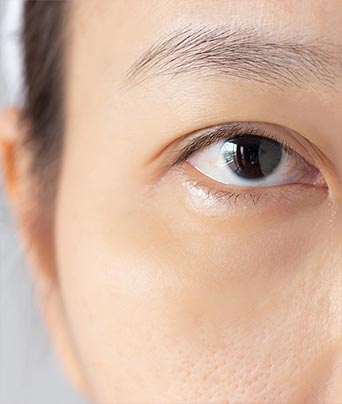Eyelid Conditions: Styes, Chalazion & Lid Inflammation
When a Small Lump on the Eyelid Isn’t So Small After All
A swollen, red bump near the eyelid may seem like a minor issue—but eyelid conditions like styes, chalazion, or blepharitis can cause significant discomfort and may need medical attention if they do not resolve.
.
At London Eye & Retina, we take a comprehensive approach to eyelid problems. Whether it’s a recurring stye or persistent eyelid inflammation, we’re here to diagnose the cause, offer evidence-based care, and guide your recovery.
What Is a Stye?
A stye (or hordeolum) is a painful lump that forms when the oil glands at the base of the eyelashes become blocked and infected. It may look like a pimple and is typically filled with pus.
Styes can appear:
- On the outer eyelid (external stye)
- On the inner eyelid surface (internal stye)
They are most often caused by a bacterial infection, usually Staphylococcus aureus, and may be accompanied by swelling, tearing, and tenderness in the affected eyelid.
What Is a Chalazion?
A chalazion is a firm, painless bump that develops when an oil gland (meibomian gland) becomes clogged, leading to inflammation. Unlike styes, chalazia are not usually infected and may take weeks to form.
While small chalazia often resolve on their own, larger ones may cause pressure on the eye or cosmetic concerns and may need further treatment.
Other Eyelid Conditions
Sometimes, eyelid lumps are part of broader issues such as:
- Blepharitis – chronic inflammation of the eyelid margins, often associated with dandruff-like scales, irritation, and crusting
- Meibomian Gland Dysfunction (MGD) – thickening or clogging of oil glands leading to dry eyes and lid inflammation
- Recurrent styes or chalazia – which may indicate underlying issues such as chronic blepharitis or rosacea
Early treatment and eyelid hygiene can prevent recurrence in many cases.
Common Symptoms
You may need a professional review if you experience:
- Painful, red bump near the lashes
- Swelling or tenderness of the eyelid
- Discharge or crusting
- Blurred vision (if the lump presses on the eye)
- A persistent or recurring lump that doesn’t go away
- Increased tearing or light sensitivity
Although most styes and chalazia are benign, persistent or atypical lesions should be assessed to rule out other conditions.
How Are Eyelid Lumps Diagnosed?
At London Eye & Retina, your evaluation includes:
- Detailed history to assess triggers and duration
- External eye examination using a slit lamp
- Eyelid eversion to inspect the inner lid for hidden lesions
- Assessment of oil gland function and signs of inflammation
If there’s any concern about atypical features, further testing or biopsy may be advised.
Treatment Options
Treatment depends on the cause, size, and duration of the condition. Common approaches include:
- Warm compresses to help drain the gland
- Topical antibiotic ointments for infected styes
- Oral antibiotics if there’s surrounding tissue involvement (preseptal cellulitis)
- Steroid eye drops (only if prescribed by an eye specialist)
- Incision and drainage for persistent or large chalazia
- Eyelid hygiene practices to prevent recurrence
We tailor treatment to your individual symptoms, risk factors, and lifestyle.
Preventing Future Eyelid Problems
Some eyelid conditions tend to recur. Preventive tips include:
- Practising regular eyelid cleansing (lid scrubs)
- Avoiding rubbing the eyes with unwashed hands
- Replacing old makeup and contact lenses as advised
- Managing dry eyes or skin conditions that may contribute
Our clinic can guide you on how to incorporate eyelid care into your daily routine.
Don’t Ignore That Eyelid Bump
While many eyelid lumps are harmless, some can persist or affect your comfort and vision. If a stye or chalazion doesn’t improve within a few days, or if you notice unusual features, it’s best to get it checked.
Book a consultation at London Eye & Retina today for a thorough examination and guidance on safe, effective treatment.
Thoughtful Care for Everyday Eye Concerns


